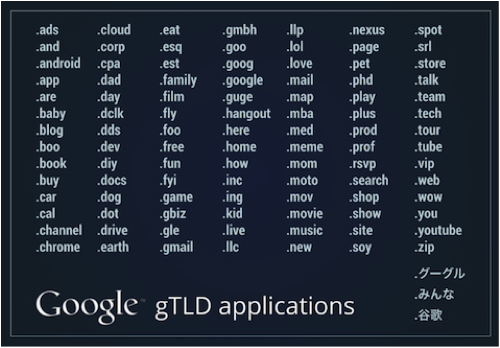ICANN’s purpose for the introduction of new top-level domains (gTLDs) is to enhance innovation, competition and consumer choice in an Internet world of dwindling domain name availability. In addition, the new top-level domains will introduce many new safeguards to help support a secure, stable and resilient “next generation of the Internet.”
Dot Specific
In the age of Dot Anything, what we are really talking about is Dot Specific. TLDs will be the stated indicators of what the domain is about and they may provide the guiding sources to find what is relevant more easily. TLD's will also deliver content to us based upon segmentation much greater than is now currently available with current Internet search capabilities.
In the age of “Not Com,” top-level domains may evolve to become the “Zip Codes” of the Internet, providing a categorization or cataloging capability.
The Registry Sets the Rules
Care and maintenance of top-level domains are assigned to a Registry. Each TLD has its own Registry. The Registry maintains the Root Servers and issues rights to Second Level Domains (SLDs) to the public and government, usually for a fee, through companies known as Registrars.
Regardless of which Registrar an individual may use to register a domain, the registration goes into the Registry for that particular TLD.

The Future of Search and SEO
The future of search may be tied to the continued release of new gTLDs. Google is heavily involved in the new TLD movement and applied to be the registry for: .みんな, .ADS, .APP, .BOO, .DAD, .DAY, .EAT, .ESQ, .FLY, .HERE, .HOW, .ING, .MEME, .MOV, .PROF, .RSVP, .SOY, and .ZIP, among others.
Google will be using some of those domains, such as . GOOGLE , . YOUTUBE, and . PLUS, for Google products, so these particular domains will not be open to the public. Other domains that Google applied for had additional applicants and involved Google fighting in a bidding war (auction) with other applicants.
As noted in the Google Registry site www.registry.google “Expanding the Online Frontier,” Google launched its fifth open top-level domain, .page. It is important to note the deep the investment Google is making in new gTLDs. Anyone doubting that this is a concerted movement to a “New Internet” needs to look hard at Google’s involvement. And Google will have a lot to do with the success of many of these new TLDs.
Benefits of the New gTLD Program
New gTLDs are specific and meaningful. Not-com domain names allow businesses and individuals to brand themselves before and after the dot. This offers the freedom to create an online presence that is simpler and truer to a brand. For example, www.Driftaway.coffee or www.Artof.fitness are two business names that call to mind visuals that .com does not.
New gTLDs are memorable. More than 50 percent of consumers think new domain names in meaningful combinations will be easier to remember.
Not-com choices are characterized by simplicity and accuracy. Shorter domain names are easier to remember, which is an added advertising benefit for any company. ABC.xyz (Google’s parent company’s domain name) is shorter, cleaner and more memorable than GoogleAlphabet.com.
Many new gTLDs are available now. Some of us have suffered the disheartening experience of searching for a dot-com domain name, only to find it unavailable. With not-com, the probability of getting your top choice domain name is higher than ever.
New gTLDs allow you to create a digital strategy that helps your audience and consumers get to the content they want on your website more easily.
Think of branded navigation as an additional shortcut to specific online content that your customers can access without having to engage with a complicated sitemap. As the Internet grows more cluttered, the ability to get to the information you want with fewer clicks and stops along the way is an increasingly valuable tool.
If you doubt where the Internet and the Age of Not Com are headed, consider:
• Google is already operating its own registry and registrar.
• Facebook recently bought a registrar.
• Twitter is advocating for an early second round of gTLDs just for brands so they can get in and start innovating at the DNS level.
It is only the beginning of the next generation of the Internet. The big question is, do you want to be part of it?
You can read more from our series: "From Dot Com to Not Com in the Age of Dot Anything"
Article 1: A Brief History of “Domain Names” as the Evolution and Acceptance of “Not Coms” Continues
Article 2: Domain Names Represent Brands and Virtual Destinations…And Can Have Huge Value
Article 3: Navigating the "New Internet" and Why We Need New TLDs.








